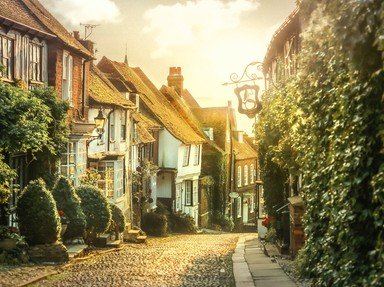Quiz Answer Key and Fun Facts
1. Rock formations like spires that grow from the ground are stalagmites and those that hang from the ceiling are stalactites, but how do they actually form?
2. What is rare about the Hellfire Caves near High Wycombe in Buckinghamshire?
3. Some caves are so full of water - right to the roof - that there is no air at all. What are these water filled systems called?
4. What is a petrifying well?
5. Kent's Cavern is a spectacular cave where remains of prehistoric men show that it was once used as a dwelling place. Near which south coast holiday resort is it to be found?
6. What rare stone was mined in caves in the Peak District?
7. In what range of Somerset hills are the famous Cheddar Caves?
8. Gough's Cave is commonly regarded as the largest in England and new sections are often found. In which area is Gough's Cave?
9. The caves on the Isle of Purbeck, (a peninsula in Dorset) were once used for storage by smugglers. What geographical feature made this particularly suitable?
10. There is a small cave in a sandstone hill near Farnham, Surrey, which is the source of various legends explaining local landmarks. How was the cave originally formed?
Source: Author
Toeknee448
This quiz was reviewed by FunTrivia editor
spanishliz before going online.
Any errors found in FunTrivia content are routinely corrected through our feedback system.

